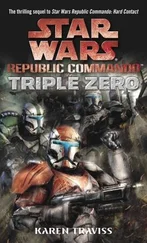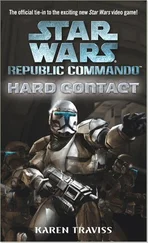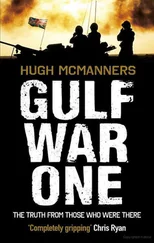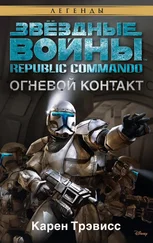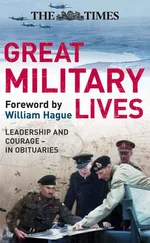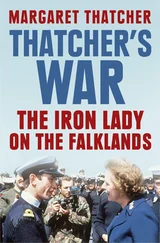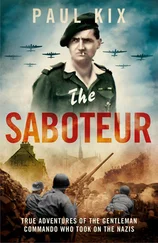Hugh McManners - Falklands Commando
Здесь есть возможность читать онлайн «Hugh McManners - Falklands Commando» весь текст электронной книги совершенно бесплатно (целиком полную версию без сокращений). В некоторых случаях можно слушать аудио, скачать через торрент в формате fb2 и присутствует краткое содержание. Город: London, Год выпуска: 2014, ISBN: 2014, Издательство: Nightstrike Publishing, Жанр: nonf_military, Биографии и Мемуары, на английском языке. Описание произведения, (предисловие) а так же отзывы посетителей доступны на портале библиотеки ЛибКат.
- Название:Falklands Commando
- Автор:
- Издательство:Nightstrike Publishing
- Жанр:
- Год:2014
- Город:London
- ISBN:978-0-992-81540-0
- Рейтинг книги:4 / 5. Голосов: 1
-
Избранное:Добавить в избранное
- Отзывы:
-
Ваша оценка:
- 80
- 1
- 2
- 3
- 4
- 5
Falklands Commando: краткое содержание, описание и аннотация
Предлагаем к чтению аннотацию, описание, краткое содержание или предисловие (зависит от того, что написал сам автор книги «Falklands Commando»). Если вы не нашли необходимую информацию о книге — напишите в комментариях, мы постараемся отыскать её.
Falklands Commando — читать онлайн бесплатно полную книгу (весь текст) целиком
Ниже представлен текст книги, разбитый по страницам. Система сохранения места последней прочитанной страницы, позволяет с удобством читать онлайн бесплатно книгу «Falklands Commando», без необходимости каждый раз заново искать на чём Вы остановились. Поставьте закладку, и сможете в любой момент перейти на страницу, на которой закончили чтение.
Интервал:
Закладка:
Later that evening, one of the D Squadron hierarchy (some officious officer or senior NCO) appeared in the darkness, demanding for some reason to know why we hadn’t got a rear sentry. He only narrowly avoided being shot by both me and by Steve Hoyland – who was the sentry in question. Steve heard this man’s bad tempered question, and hissed that he was just a few feet away from treading on him. Nick and I were firing and not in exactly the best of tempers. We told him to piss off, and he retreated in some surprise.
I also had a very strange conversation with one SAS trooper from G Squadron, who told me about how Kiwi Hunt had been killed. This guy really needed to talk about it, as if he had to get the thing off his chest. The conversation started with him asking me a question: had I ever been wounded? When I answered “No”, he said he’d been wounded several times and it really hurt. I didn’t know this guy at all, and had never actually seen him as it was dark and we were together in a hole in the rocks. He told me he’d been the machine gunner in the SAS patrol that had ambushed Kiwi’s team. He said they’d spotted the SBS team a way off in their night scope, and had laid an ambush for them. He’d wanted to open fire with his machine gun, but the squadron commander had ordered him to hold fire until they were only ten yards away. The squadron commander then challenged the SBS in English. Kiwi behaved perfectly, freezing and holding both arms out to his side. The two behind him also stopped, but the man at the end, ‘tail-end-Charlie’, who might not have heard the challenge, tried to sneak off into the darkness. Tail-end-Charlie was thought to pose a threat to the SAS patrol, the squadron commander lost the battle of wills, and this guy – the machine gunner – opened up.
He said they should have opened fire much earlier. In an ambush where there’s no time to lay Claymore anti-personnel mines out in front, it’s usually the job of the machine gunner to trigger the ambush by opening fire. The ambush commander is always lying beside him, to give the order. It’s sensible for an ambush to be triggered immediately there’s a threat to the patrol, or when the entire enemy unit is within its zone of fire. Furthermore, the SAS usually operate on the assumption of no friendly forces being in their tactical area of operation, which can be a convenient justification for taking the easy option of opening fire and asking questions later. Normal infantry cannot take such a cavalier attitude as they invariably work surrounded by other friendly units. The SAS is all about decisive firepower – far more so than the more cautious SBS. There’s also tremendous peer pressure in the SAS. Nobody would thank a colleague who held his fire and got it wrong.
The machine gunner told me the squadron commander kept ordering him to wait – whispering hoarsely in his ear, far longer than he considered reasonable. In the end, amid all the confusion of the situation the machine gunner’s intense desire to open fire could no longer be constrained by the squadron commander, who, as the story was related to me, never gave the order to fire. I assume that nobody else in the SAS patrol opened fire, as only Kiwi was hit.
The machine gunner’s abiding memory of this terrible moment was of the ammunition in Kiwi’s combat vest exploding in the darkness as he took the hits. The machine gunner seemed to me to be badly affected by the incident, which had occurred very suddenly and shockingly at just a few yards range. He was derisive of what he said was the SBS patrol’s reaction, singling out ‘tail-end-Charlie’ for breaking down in tears and pounding the ground with his fists.
There was obvious antagonism between the SAS and SBS throughout the campaign. At that time it was rare for the two organisations to work together, so there was a lot of mutual misunderstanding. It’s fair to say the SAS believed themselves superior, showing a very obvious arrogance in this respect. In his diatribe of expiation, the machine gunner blamed the SBS: they shouldn’t have been in the SAS’ area; then having strayed in, got what they deserved…. and so on.
This was very uncomfortable for me to listen to, but I decided to keep my thoughts to myself and it rapidly became a one-way monologue, delivered as if I wasn’t there. I got the impression that for this man, these were things that could not be bottled up any longer – anguish and confusion that could only be revealed to a stranger.
The SAS is a very macho and competitive organisation, which in those days – and certainly until the mid-1990s – was scornful of the idea that soldiers might need therapy after combat. This person sounded lost and very lonely, so I hope venting his anger and moral confusion on me eased his pain a little.
What with all this sudden socialisation, and the arrival of enough people to repel even an Argentine battalion attack on our position, things had changed very much for the better for us on Beagle Ridge. D Squadron commander Cedric Delves told me that the big attack was probably going to take place on the night of 13/14 June, with an initial push forward the night before.
Our friends in the other FO teams were going to be in those attacks. Close-knit little teams like ours, would be out in front of the commando and para units, bringing down NGS and artillery fire.
For the first time in the campaign, 148 FO Battery radio-checked as a unit. The brief snatch of voices on the radio net enabled us to keep abreast of who was with which unit, and how they all were.
Our own commando artillery batteries were now moving up to within range of the targets we could see, so we started to fire with them during the day. That night, gunships were allocated to each of our fire-control teams, but with stringent ammunition restrictions to save resources for the big attack. As we were so far behind the front line with plenty of high-priority targets, we were exempt from this restriction, and carried on as usual. We had more good shooting: hitting enemy artillery batteries and infantry troop positions to the east of Sapper Hill.
On the afternoon of 11 June, our Naval Gunfire Control Net became particularly busy as all our teams established the radio net in readiness for the first big push. In retrospect I now know was to be a series of battalion attacks on Mount Longdon, the Two Sisters and Mount Harriet. But although we didn’t know the geographical details, from years of military exercises of this scale, I knew from the radio procedures exactly what was happening, but not the objectives, or the directions of the attacks and the critical phases by which they’d do it.
It was a dark night, very cold and quiet. Crouching in our OP, Nick and I listened to our radio net, as the other FO teams moved towards their start lines. They made their routine reports over the radio, their breathing becoming laboured as they moved quickly carrying heavy radios and weapons across the rocky ground.
‘Titch’ Barfoot reported that the unit he was with had crossed their start line and were moving towards their objective. A very fit, long-distance runner, Titch was breathing heavily and whispering into the headset. They started climbing the hill and under the weight of their heavy bergens, breathing became even more laboured and their sentences truncated. Then came the chilling message, between gasps, “We have come under fire and are taking casualties.”
One by one, the FO teams with various commandos and parachute battalions crossed their start lines. They were the same voices saying the same things as on countless training exercises. But this time they were our friends who we might not see again. After half an hour of tension, another call-sign asked the question that Nick and I had been dying to ask:
“Zero this is Zulu 41 Echo, are you in contact with 41 Bravo?” (Callsign 41 Bravo was Titch Barfoot’s team)
Читать дальшеИнтервал:
Закладка:
Похожие книги на «Falklands Commando»
Представляем Вашему вниманию похожие книги на «Falklands Commando» списком для выбора. Мы отобрали схожую по названию и смыслу литературу в надежде предоставить читателям больше вариантов отыскать новые, интересные, ещё непрочитанные произведения.
Обсуждение, отзывы о книге «Falklands Commando» и просто собственные мнения читателей. Оставьте ваши комментарии, напишите, что Вы думаете о произведении, его смысле или главных героях. Укажите что конкретно понравилось, а что нет, и почему Вы так считаете.

